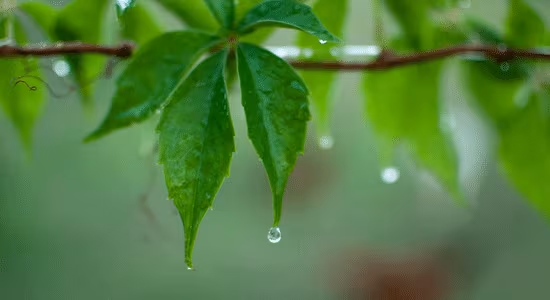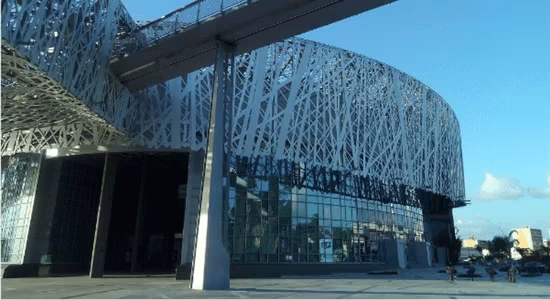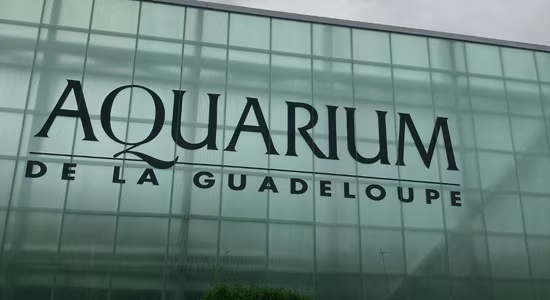What to do when it rains in Guadeloupe ?
We easily associate Guadeloupe with the sun, the beach and the coconut trees but we forget that a good part of the year, the rain is omnipresent. On the island, the rainy season extends from July to November.
However, even during the dry season, it is not uncommon to experience some rainy episodes. In order not to waste your time and your vacations staying at home, take the opportunity to discover activities to do when it rains in Guadeloupe !
The rainy season in Guadeloupe
Before making a point on the activities to do on a rainy day in Guadeloupe, it is interesting to understand the local weather.
The Guadeloupean year is divided into 2 seasons, the dry season from December to May and the hurricane season (also called rainy season or wet season) from June to November.
If you visit the island during the summer period (from a metropolitan point of view) from July to August, you will necessarily have to deal with rain.
Moreover, this period is also conducive to the passage of cyclones. Although they are relatively frequent, they are not all dangerous, but it is still better to check the weather forecast before going on an adventure on the island.

Rainfall during the wet season in Guadeloupe
As you can imagine, during the wet season, rainfall is high, up to 228.9 millimeters on average in October. Particularity of the local climate, it is also during the rainy season that temperatures are the highest.
During this period on the archipelago, you have to deal with humidity and heat. If you can, prefer an accommodation in altitude to gain a little coolness!
But then what to do when it rains on the island?
Unless you want to try something special, lazing on the beach is not the best choice to enjoy your time! The best is to go for indoor activities. Guadeloupe has a rich historical and cultural heritage and you will be spoilt for choice, whether you are in Basse Terre or Grande Terre.
Museums to discover
If there is one activity to do when it rains, and this beyond Guadeloupe, it is to visit museums. Guadeloupe does not lack them, take the time to discover some of them.
The ACTE Memorial
The history of Guadeloupe is indelibly marked by slavery. The ACTE Memorial in Pointe à Pitre is a strong testimony of this period. As its name indicates, it is a memorial, a tribute to the slaves who passed through the island, but also a museum explaining and telling what slavery was like in Guadeloupe.
The modern and recent building is a place not to be missed during your visit, during or outside the rainy season. For more information, you can read our article on the Act Memorial.

The house of Cocoa
Fertile land, Guadeloupe has seen the development of the plantation and the export of cocoa. The importance of the culture of the bean on the island is such that a museum is dedicated to it: the House of Cocoa.
This museum located at Pointe Noire in Basse Terre, retraces the history of cocoa production on the island and its transformation into chocolate through an original and gourmet journey during which your taste buds will be solicited. Are you curious? Read our article about the cocoa house.
The coffee museum (Café Chaulet)
Always on the theme of plantations, the coffee museum of Vieux Habitants is a curiosity to appreciate the time of a visit. Are you a caffeine lover? Come to discover the subtleties of the culture of the seed in Guadeloupe and let you serve a good cup of hot coffee.
And many other museums
If the weather is spoiled during your stay and you have a desire to deepen your knowledge of the Creole culture, other museums welcome you and they are numerous:
The Schœlcher museum, in Pointe-à-Pitre
The Saint-John-Perse museum, in Pointe-à-Pitre
The Edgar-Clerc museum in Le Moule
The Ecomuseum of Marie Galante
The Creole Ecomuseum of Guadeloupe, in Sainte-Rose
The rum museum, in Sainte-Rose
The shell museum, in Pointe-Noire.
The museum of the seed, in Trois-Rivières.
The museum of the cane, in Port-Louis.
The museum of Guadeloupe, in Basse-Terre
The museum costumes and traditions of Guadeloupe
The museum of photography in Gourbeyre.
The Gerty-Archimède museum in Basse-Terre.
The museum L'Herminier in Pointe-à-Pitre
House of the forest on the road of the Crossing
House of wood in Pointe-Noire
House of bananas in Trois-Rivières
House of the coconut in Saint-François
Guadeloupean distilleries
Less known than that of Martinique, the Guadeloupean rum is not in rest. Exported all over the world, it is a local product appreciated by locals and tourists. To produce it, several rum factories are spread over the island. Some of them open their doors to the public in order to make known the history of rum but also to show its manufacturing process!
The Damoiseau distillery
The Damoiseau rum distillery has the particularity of being the only one present in Grande-Terre, in Le Moule. It is however the most important of Guadeloupe. It captures alone 50% of the Guadeloupean production. The visit is free and open to the public. Discover the making of rum through this distillery.
The Bologne distillery
The Bologne distillery, located in Basse-Terre, at the foot of La Soufrière, welcomes you every morning from Monday to Friday. Discover the spectacle of bottling and historical relics such as the old mill, stills and an imposing water wheel. At the end of the visit, a store opens its doors to you, take advantage of it to taste the rums produced and why not buy some (Be careful, alcohol abuse is dangerous for your health).
The Poisson distillery
The Poisson distillery in Marie-Galante, in Grand-Bourg, produces Père-Labat rum. It is one of the most famous brands. It is even often considered as the best rum of the archipelago. The rum factory, which produces more than 300,000 liters of rum per year, takes its name from a 17th century French missionary, Père Labat. While visiting the Poisson distillery, discover the process of alcohol production. As in other distilleries, a store welcomes visitors and offers a free tasting. Of course, you can also buy rum and souvenirs!
Explore the aquarium of Guadeloupe
Inaugurated in 1985, the Guadeloupe aquarium has been given a facelift in 2018, it is a brand new building that welcomes you to discover an aquatic fauna of nearly 300 species, distributed in 50 tanks and 350,000 L of seawater. The number of fishes and invertebrates exposed amounts to more than 2000! To simplify your visit, the Gosier aquarium offers free audio guides to give you more information about what you are exploring. In parallel, the aquarium is divided into 11 easily accessible areas :
The freshwater basin
The lagoon basin
The marine curiosities
Remarkable species
Invertebrates
The laboratory
Marine mammals
The mangrove
Coral reefs
Sharks
Marine turtles
During the rainy season it is an ideal way to discover, other than diving, the local marine fauna and flora; turtles, corals, rays, crustaceans, rare fish...

Go shopping
Beyond culture and heritage, Guadeloupe also has several shopping centers and markets.
The shopping centers are mostly in the main cities. We can mention Milenis in Abymes, Le village in Jarry or the huge Destreland in Baie-Mahault where you will find many stores and restaurants to spend a whole day !
Outside of the Guadeloupean shopping malls, some markets are covered like the markets of Saint-François and Basse-Terre. Browse through their aisles to soak up the scents of local fruits and vegetables, spices, rum... It's also a great opportunity to buy local handicrafts that will make great souvenirs.
To move easily in rainy weather from a museum to a shopping mall or from the aquarium to a covered market, don't hesitate to opt for car rental in Guadeloupe. Not only do you gain in comfort but also in time !

Subscribe to our newsletter and receive our best offers of the moment exclusively


Tripadvisor

Travel award

Kayak
